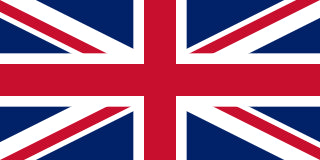Healthcare service providers such as dental practices, clinics, hospitals, and veterinary practices deal with clinical waste daily. Given the health risks clinical waste poses, it must be disposed of safely and responsibly, following the proper legislation. Correctly eliminating clinical waste also avoids hefty fines and legal action.
The safe disposal of clinical waste is also paramount to protecting the environment, your staff, the public, and anyone responsible for handling your clinical waste disposal.
Wheelie Bin Solutions has compiled this handy guide so you and your business can implement a clinical waste management plan that sets out transparent and law-abiding clinical waste disposal procedures.
What is clinical waste?
Clinical waste is a type of waste that has the potential to cause infection or injury to others. Syringes, swabs, tissue (animal or human), and PPE are all types of clinical waste.
The official definition of clinical waste is noted in The Controlled Waste Regulations 1992, defined as “any waste which unless rendered safe may prove hazardous or may cause infection to any person coming into contact with it”.
Clinical waste is typically associated with healthcare services, but the coronavirus outbreak meant businesses across the country faced a clinical waste disposal problem. COVID-19 tests and face coverings became familiar sights in the workplace, meaning a new wave of businesses had to adapt to the disposal of PPE and what can be a complex and sometimes confusing process.
However, not all healthcare wastes are clinical wastes. For example, most medicinal products aren’t hazardous waste. The only exceptions to this rule are medicines with cytotoxic (ability to kill cells) or cytostatic properties (prevent cells from multiplying). Commonly administered in large doses as cancer treatments, their toxicity means they can present a significant risk to those who handle them.
How should clinical waste be disposed of?
No matter what type of clinical waste your business accumulates, it must be segregated from other wastes and treated and disposed of appropriately based on the hazard it poses. To put it bluntly, mixing clinical waste is prohibited in the UK and Wales.
The easiest way to action this is through the national colour coding system. Each category of clinical waste is represented by a specific colour clinical waste bag or bin – this provides easy recognition for both the waste producers and handlers.
While adopting this system isn’t mandatory, it’s a great way to avoid contamination of different waste streams. It also ensures you stay compliant, environmentally positive, and proactive towards safeguarding public health.
Clinical waste colour coding
For best clinical waste disposal practices, we recommend putting the following colour coding system in place:
- Yellow – Infectious waste for disposal by incineration. Examples of yellow clinical waste are contaminated syringes and needles.
- Orange – Infectious waste for disposal by treatment or incineration. This consists of items that are likely to be contaminated with blood and/or body fluids (including saliva), such as gloves and gowns.
- Purple – Containing cytotoxic or cytostatic waste for disposal by incineration. A classic example is needles and syringes used after chemotherapy.
- Red – Anatomical waste for disposal by incineration. Anatomical waste examples include body parts, blood bags, and blood preserves commonly associated with surgical procedures.
- Blue – Medicinal waste for disposal by incineration. This stream is for non-hazardous medicines and denatured drugs that require disposal. Examples include blister packs and inhaler cartridges.
- Yellow/Black – Non-hazardous hygiene waste. Incontinence pad, wipes, and any garments with non-infectious fluids.
- White – Dental (amalgam and gypsum). Amalgam is in tooth fillings and capsules containing residues; Gypsum is in dental study moulds.
- Clear – Lateral flow hazardous. A recent inclusion following mass testing using lateral flow devices.
Top tips for the safe disposal of clinical waste
There are five key steps to follow to help ensure full compliance with clinical waste regulations.
1. DO NOT overfill your clinical waste bags.
Leave enough space to tie your bags securely so the bag doesn’t overflow and items don’t fall out. This helps inhibit the spread of infection
2. Keep records of all clinical waste
Clinical waste must be traceable. As a clinical waste producer, you are responsible for tracking your waste and keeping records of when you receive and dispose of it. Enforce a policy whereby staff must keep a waste acceptance record sheet.
3. Support colour-coding with waste segregation posters
Do everything you can to help your staff and key members of your clinical waste disposal logistics follow procedures correctly. Posters on the wall are constant reminders about the impact of improper disposal of clinical waste, as well as ensuring the different types of clinical waste enter the correct stream.
4. Wear appropriate PPE like gloves, face masks, and overalls
Again, essential to avoid the risk of spreading infection or disease when handling clinical waste.
5. Dispose of any sharps immediately after use in a sharp bin
Sharps bins are typically used by medical, science, or beauty businesses to temporarily store sharp objects – hypodermic needles, syringes, etc. These containers keeps objects safe from causing physical injury or cross-contamination until they are ready to be transported to an appropriate disposal facility.
Make sure you find a clinical waste disposal service that is experienced and fully compliant with all regulations, confirming your clinical waste is ‘rendered’ safe.
With over 35 years of experience in the waste industry, you can rely on Wheelie Bin Solutions to provide you with high-quality clinical waste bins that cover commercial businesses of all sizes. Please don’t hesitate to contact us today.








Craig Pryce
With over 17 years of experience in the waste and recycling industry, Craig is passionate about making recycling easier and reducing the negative impact of litter. He has been the managing director of Wheelie Bin Solutions (WBS) since January 2016, and prides the company on his expert knowledge, top-quality products, and customer service. His proudest moment was when WBS supported the 2012 Olympic Games, working in partnership with Contenur UK to supply over 9000 bin containers to all Olympic venues. Craig is always keen to share his knowledge, so whether you need advice about the benefits of a wheelie bin lock, or ideas for alternative uses for your wheelie bin, Craig will ensure your recycling and waste disposal habits are gold medal worthy.